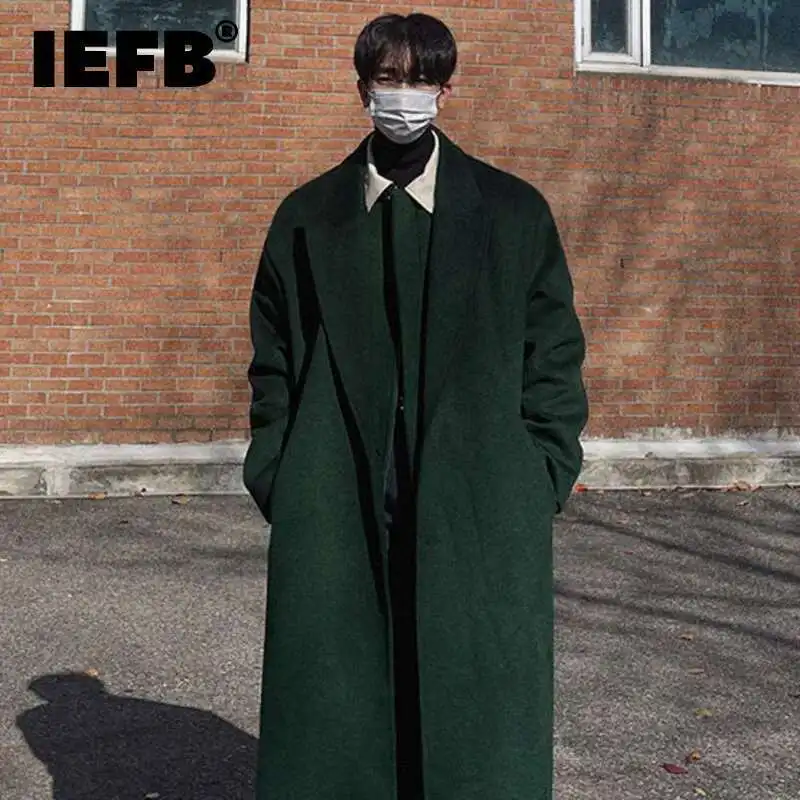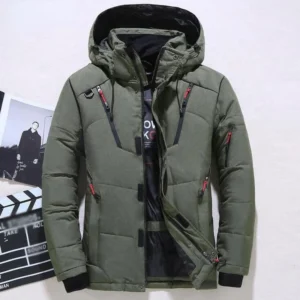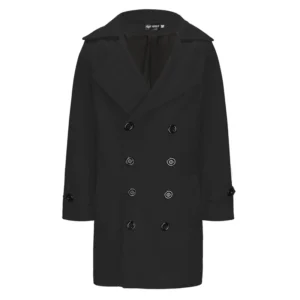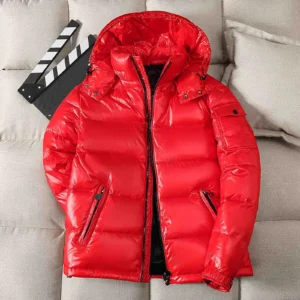Understanding the Appeal of Long Men’s Coats
A long men’s coat typically extends below the knee, ranging from knee-length (36-40 inches), mid-calf (41-45 inches), to full-length (46-50 inches). These sophisticated garments have maintained their appeal for generations, offering both practical benefits and timeless style that transcends seasonal trends.
The enduring popularity of long coats stems from their unique combination of warmth, protection, and refined appearance. Unlike shorter jackets, a properly fitted long coat creates a striking silhouette that adds height and presence to any man’s appearance. The extended length provides superior coverage during cold weather, protecting not only the torso but also the legs from wind and precipitation.
Long coats have historically been associated with formality and status, dating back to military uniforms and aristocratic dress codes. Today, they bridge the gap between practical outerwear and fashion statement. Whether it’s the dramatic sweep of a cashmere overcoat or the weather-resistant functionality of a long parka, these garments adapt remarkably well to different style aesthetics.
Men of varying heights and builds can wear long coats effectively, though coat length measurements and classifications should be considered when selecting the ideal proportion. Taller men can confidently wear longer styles that might overwhelm shorter frames, while mid-length options create balance for average heights. The current resurgence in longer silhouettes reflects both fashion’s cyclical nature and a renewed appreciation for classic menswear with presence and substance.
Essential Types of Long Men’s Coats to Know Before Shopping
Before exploring where to purchase your perfect long coat, understanding the distinct styles available will help narrow your search. Each type offers unique benefits suitable for different occasions, body types, and personal styles.
Classic Overcoats/Topcoats
- Typically knee-length or slightly longer
- Clean lines with single or double-breasted closures
- Made from wool or wool blends for warmth and structure
- Versatile enough for business and formal occasions
- Usually feature notched lapels and a tailored fit
Trench Coats
- Usually mid-calf length with a belted waist
- Distinctive features include storm flaps, epaulets, and a back vent
- Traditionally made from water-resistant gabardine cotton
- Appropriate for mild to moderate weather conditions
- Transitions well between casual and formal settings
Duster Coats
- Full-length design reaching near the ankles
- Loose fit with a straight cut and rear vent for mobility
- Originally designed for horseback riding and protection from dust
- Modern versions come in various materials from canvas to leather
- Creates a dramatic silhouette best suited for casual or avant-garde styles
Long Parkas
- Knee-length or longer with insulation for extreme cold
- Features protective hoods, often fur or faux-fur lined
- Made with weatherproof technical fabrics and substantial filling
- Emphasizes function over formality but has gained fashion status
- Best for casual everyday wear in harsh winter conditions
Extended Peacoats
- Longer adaptation of the classic maritime jacket, reaching mid-thigh
- Heavy wool construction with large collar and double-breasted front
- Features large buttons and slash pockets
- Bridging casual and semi-formal styles
- Excellent protection from winter elements
Chesterfield Coats
- Knee-length or longer with a straight cut
- Distinguished by its velvet collar and often concealed closure
- Made from fine wool or cashmere
- Epitomizes refined formal outerwear
- Appropriate for business and evening occasions
Covert Coats
- Mid-thigh to knee-length with a clean silhouette
- Originally designed for country sports with durable twill fabric
- Features include fly front closure and distinctive four rows of stitching at cuffs and hem
- Versatile for both country and city settings
- Straddles the line between casual and business appropriate
Understanding these distinctive styles will help you identify exactly what you’re looking for when browsing collections. The proper coat length specifications can significantly impact your overall appearance, while exploring various long overcoat designs will provide inspiration for your purchase.
Premium Materials That Define Quality in Long Coats
The material of your long coat determines not just its appearance but also its performance, longevity, and care requirements. Recognizing quality fabrics is essential when evaluating potential purchases.
Wool & Wool Blends
- Pure Wool (100%): Exceptional warmth and natural water resistance
- High-Quality Indicators: Look for fiber content above 80% wool, with higher percentages (and finer wool grades like Super 120s and above) commanding premium prices
- Weight Considerations: Heavier fabrics (16-32 oz/yd²) offer superior warmth and drape
- Pros: Excellent insulation, breathable, naturally wrinkle-resistant
- Cons: Requires professional cleaning, susceptible to moths
Cashmere and Cashmere Blends
- Pure Cashmere: Luxuriously soft with superior insulation despite lightweight feel
- Cashmere Blends: Often mixed with wool (90% wool/10% cashmere or 70/30 blends) for durability while maintaining softness
- Quality Indicators: Two-ply yarns, dense weave, and minimal pilling
- Pros: Unmatched softness, excellent warmth-to-weight ratio, elegant drape
- Cons: Significantly higher price point, requires delicate care, less durable than wool
Cotton and Gabardine
- Common in: Trench coats and lightweight options
- Features: Tight diagonal weave in gabardine creates natural water resistance
- Weight Range: 8-12 oz/yd² for standard options
- Pros: Breathable, washable (in some cases), ages well with proper care
- Cons: Less insulation than wool, wrinkles more easily
Technical Weatherproof Fabrics
- Common in: Long parkas and performance-oriented coats
- Features: Synthetic membranes or coatings for waterproofing and windproofing
- Modern Examples: Gore-Tex, waxed cotton, nylon with DWR (Durable Water Repellent)
- Pros: Superior weather protection, often easier to clean
- Cons: Less breathable (except premium options), sometimes less elegant appearance
Leather and Suede
- Full-grain Leather: Highest quality with natural surface intact, develops character over time
- Top-grain Leather: Slightly processed for more uniform appearance
- Suede: Soft napped finish, luxurious appearance but less weather-resistant
- Pros: Extremely durable, develops unique patina with age, excellent wind resistance
- Cons: Requires specific care products, heavier than fabric options, significant price premium
When evaluating materials, remember that construction quality is equally important—even the finest fabrics can disappoint in a poorly made garment. Exploring quality wool overcoat options will help you understand how premium materials translate to exceptional garments worth the investment.
Top Online Retailers for Long Men’s Coats
Online shopping offers unparalleled convenience and selection when searching for the perfect long coat. The digital marketplace provides access to virtually unlimited styles, sizes, and price points, all available from the comfort of home.
Premium Department Store Websites
- Distinguishing Features: Curated selections from multiple designers and in-house brands
- Advantages: Reliable sizing consistency, professional photography, detailed product information
- Price Range: $200-$3,000+
- Notable Options: Offer extensive size ranges and seasonal sales
- Shopping Experience: Often provide video content, multiple image angles, and styling suggestions
- Return Policies: Typically generous with extended windows and free returns
Dedicated Fashion E-commerce Platforms
- Distinguishing Features: Vast selection across price points, often with exclusive online brands
- Advantages: Powerful filtering options, customer reviews, and styling recommendations
- Price Range: $150-$2,000
- Notable Benefits: Often offer membership programs with shipping benefits and early access to sales
- Shopping Experience: Interactive size guides, outfit building tools, and personalized recommendations
- Return Considerations: Policies vary widely; check before purchasing
Direct-to-Consumer Coat Specialists
- Distinguishing Features: Focused exclusively on outerwear with specialized expertise
- Advantages: Exceptional quality-to-price ratio by eliminating middlemen
- Price Range: $250-$1,200
- Notable Benefits: Often feature detailed information about materials and manufacturing
- Shopping Experience: Detailed size and fit information, specific to coat styles
- Customer Service: Typically more personalized with knowledgeable support staff
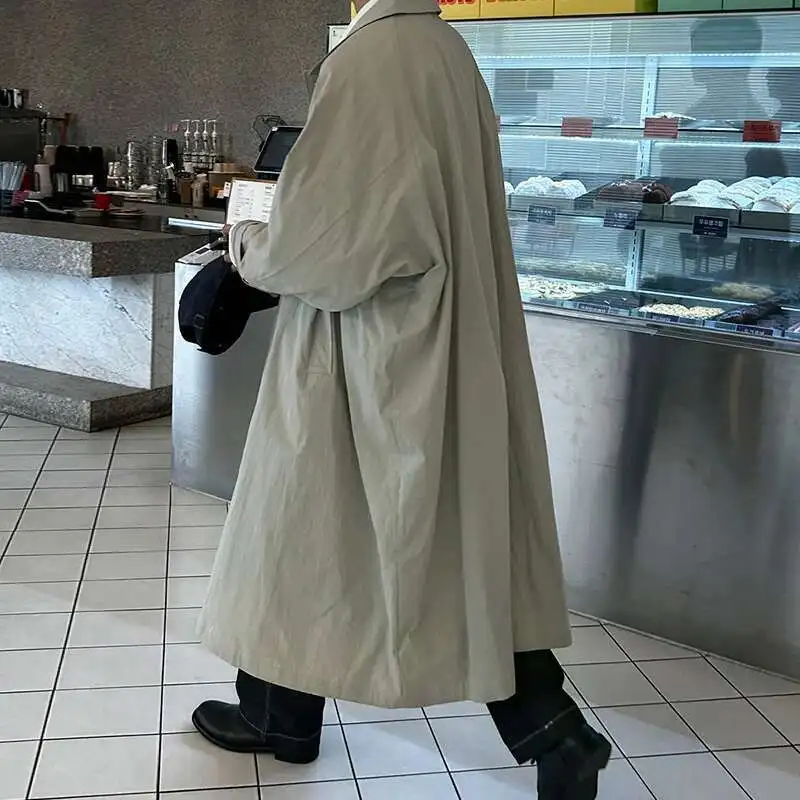
Brand-Specific Websites
- Distinguishing Features: Complete brand catalogs with exclusive colorways and styles
- Advantages: Most comprehensive selection from favorite designers, often with brand-exclusive fits
- Price Range: Varies widely depending on brand positioning ($200-$5,000+)
- Notable Benefits: Early access to new releases, complete size ranges including uncommon sizes
- Shopping Experience: Immersive brand storytelling and detailed product provenance
- Special Services: Some offer made-to-measure options or customization not available at retailers
Budget-Friendly Online Options
- Distinguishing Features: Trend-focused designs at accessible price points
- Advantages: Affordable entry points for experimenting with styles
- Price Range: $80-$300
- Notable Considerations: May sacrifice material quality or construction details
- Shopping Experience: Limited product information but easy navigation
- Value Strategy: Look for seasonal sales and clearance events for best value
When shopping online, utilize detailed measurements rather than relying solely on size labels, as sizing can vary significantly between brands. Many retailers now offer virtual try-on technologies or detailed fit descriptions that can help visualize how a coat will look on your frame. For those seeking particular materials, high-quality wool coat options can be explored through specialized collections.
Where to Shop for Long Men’s Coats In-Person
Despite the convenience of online shopping, the in-person coat buying experience offers distinct advantages that can’t be replicated digitally. Physical stores allow you to assess fabric quality through touch, try multiple sizes for perfect fit, and visualize how colors appear in natural light.
Department Stores with Extensive Menswear Sections
- Offer diverse brand selections under one roof
- Professional sales associates often provide knowledgeable guidance
- Convenient on-site tailoring services for perfect fit adjustments
- Seasonal sales provide opportunities for significant savings
- Try on multiple styles in a single visit for efficient comparison
Specialty Men’s Clothing Boutiques
- Carefully curated selections with distinctive styles not found in mainstream retailers
- Higher level of personalized service from knowledgeable staff
- Opportunity to discover unique brands and limited-edition pieces
- Often feature higher quality construction and materials
- Building relationships with boutique owners can lead to notifications when ideal pieces arrive
Designer Flagship Stores
- Complete brand collections including runway pieces not widely distributed
- Immersive brand experience with expert styling advice
- Access to brand-exclusive fits and colorways
- Premium shopping environment with attentive service
- Special events and preview opportunities for regular customers
Outlet and Discount Retailers
- Significant savings on past-season designer pieces
- Opportunity to find high-quality coats at reduced prices
- Best selection typically available at season transitions
- Requires patience and regular visits to find standout pieces
- Consider traveling to outlet locations outside major cities for better selection
Vintage and Secondhand Shops
- Unique pieces with character and history
- Often feature superior construction quality from earlier eras
- Sustainable shopping option with reduced environmental impact
- Prices vary widely based on brand, condition, and rarity
- Requires knowledge of quality indicators to identify valuable finds
Timing your in-store shopping is crucial—the best selection of winter coats typically appears in early fall, while the deepest discounts come after the holiday season. Weekday shopping often provides a more relaxed experience with better assistance from sales staff. Many physical retailers now offer “reserve online, try in-store” options that combine the convenience of digital browsing with the advantages of in-person fitting.
How to Find Exceptional Vintage and Secondhand Long Coats
The resurgence of interest in vintage clothing has made secondhand shopping an increasingly attractive option for finding unique, high-quality long coats with character and history. Beyond sustainability benefits, vintage shopping offers access to exceptional craftsmanship from eras when garments were built to last generations.
Why Consider Vintage Long Coats
- Distinctive designs that stand apart from current mass-market offerings
- Often feature superior construction techniques rarely found in modern ready-to-wear
- Sustainable choice that reduces environmental impact
- Potential for finding premium materials at fraction of original cost
- Unique details like hand-finished buttonholes or natural horn buttons
Best Platforms for Finding Secondhand Coats Online
- Curated vintage websites specializing in menswear
- Authentication-focused luxury resale platforms
- Peer-to-peer marketplaces with robust search filters
- Vintage-specific social media accounts and their associated sales
- Online extensions of physical vintage stores
Tips for Successful Vintage Coat Shopping
- Understanding Sizing Differences: Vintage sizing often runs smaller; focus on measurements rather than size labels
- Key Measurements: Chest (1-2” larger than your chest), shoulders (should align with your shoulder edge), sleeve length (should reach base of thumb), and total length
- Material Assessment: Look for dense, tightly woven fabrics with minimal wear at stress points
- Construction Quality Indicators: Hand-stitched details, full linings, underarm shields, and reinforced buttonholes
- Condition Evaluation: Check photos carefully for shine (indicating wear), missing buttons, tears, or moth damage
When purchasing vintage pieces, examine seller feedback and return policies closely, as condition descriptions can be subjective. For those interested in specific styles like premium long leather coats, specialized vintage dealers often have the most knowledgeable authentication processes and condition assessments.
Finding the Perfect Fit in Long Men’s Coats
The difference between an ordinary coat and an extraordinary one often comes down to fit. A properly fitted long coat enhances your silhouette while providing comfort and functionality—understanding how coats should fit is crucial for making informed purchases.
Key Fit Considerations
Shoulders
- The coat’s shoulder seam should align with your natural shoulder edge
- No pulling across upper back when arms are crossed
- Shoulder width determines if alterations are feasible—this area is extremely difficult to modify
Chest and Torso
- When buttoned, should have 1-3 inches of room beyond your chest measurement
- Lapels should lie flat against the chest without gaping
- No horizontal pulling or wrinkles across chest or upper back
- Should be able to comfortably fit a suit jacket or heavy sweater underneath
Sleeves
- Length should reach the base of your thumb joint when arms are relaxed
- Allow enough room for suit jacket sleeves to show ¼-½ inch
- Armholes should be high enough to permit comfortable movement without excess fabric
Overall Length
- Business coats typically fall just above or at the knee
- Formal coats may extend below the knee
- Length should be proportionate to your height—taller men can wear longer styles
- Ensure the coat covers suit jackets completely
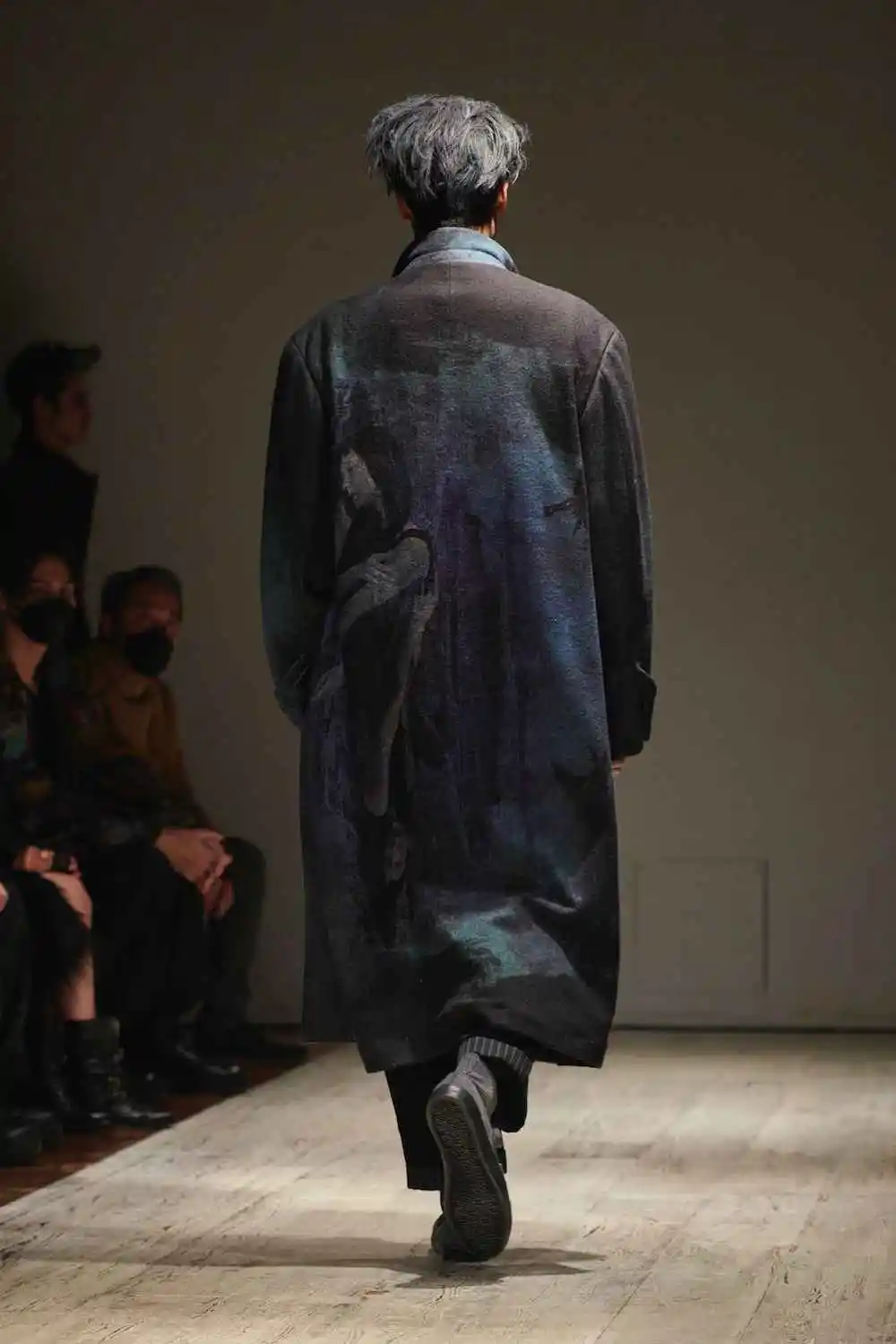
Using Size Charts Effectively
- Always measure yourself before consulting size charts
- Compare your measurements to the specific garment measurements, not just the size label
- Pay attention to fit descriptors like “slim,” “regular,” or “relaxed”
- When between sizes, consider your layering needs—size up if you’ll wear heavy layers underneath
Common Fit Issues and Solutions
- Too tight across shoulders: Size up or try a different cut—shoulders cannot be easily altered
- Sleeves too long: Simple alteration for most tailors
- Overall length too long: Can be shortened, but proportions may be affected
- Body too loose: Can be taken in at side seams and center back seam
- Collar gap: Indicates fit issues in the upper back that may require professional assessment
Understanding the differences between short vs. long coat styles can help you select the most flattering proportion for your body type. For more specialized styles, expert fitting advice for textured coat styles provides detailed guidance on how different fabrics affect fit.
What to Consider Before Making Your Purchase
With numerous options available, making a final decision requires careful consideration of several factors beyond just style preference. Use this comprehensive checklist to ensure your long coat purchase meets all your requirements.
Pre-Purchase Evaluation Checklist
Budget and Value Assessment
- Establish a realistic budget based on quality expectations
- Consider cost-per-wear calculation (purchase price ÷ estimated number of wears)
- Factor in potential alteration costs (typically $50-$200 depending on adjustments)
- Evaluate construction quality relative to price point
- Consider long-term value versus seasonal trend appeal
Climate Appropriateness
- Assess typical temperature range in your location
- Consider fabric weight needed (lighter for mild climates, heavier for cold regions)
- Evaluate weather resistance requirements (water repellency, wind protection)
- Determine if you need features like removable liners for versatility
- Consider seasonal wearing period length to justify investment
Wardrobe Compatibility
- Identify what you’ll typically wear underneath (suits, casual wear, or both)
- Select color that complements existing wardrobe pieces
- Ensure style aligns with your typical dress code (business, casual, or versatile)
- Consider how coat proportions work with your usual clothing silhouettes
- Evaluate versatility across different settings and occasions
Mens Heavy Winter Coat, Mens Insulated Coat, Mens Parka Coat
Price range: $175.52 through $237.36 Select options This product has multiple variants. The options may be chosen on the product pageMens Big and Tall Winter Coats, Mens Down Coat, Mens Hooded Winter Coat, Mens Puffer Coat
Price range: $126.44 through $217.01 Select options This product has multiple variants. The options may be chosen on the product pageMens Big and Tall Winter Coats, Mens Hooded Winter Coat
Price range: $80.32 through $106.68 Select options This product has multiple variants. The options may be chosen on the product pageMens Double Breasted Pea Coat, Mens Wool Blend Coat, Mens Wool Pea Coat
Price range: $136.84 through $157.36 Select options This product has multiple variants. The options may be chosen on the product pageMens Cashmere Overcoat, Mens Hooded Winter Coat, Mens Wool Blend Coat
Price range: $128.72 through $139.68 Select options This product has multiple variants. The options may be chosen on the product pageMens Hooded Winter Coat, Mens Insulated Coat, Mens Puffer Coat, Mens Quilted Coat
Price range: $139.88 through $177.72 Select options This product has multiple variants. The options may be chosen on the product page
Care Requirements
- Research cleaning method requirements and costs
- Assess storage space needs (quality coats require proper hanging space)
- Consider seasonal maintenance requirements
- Evaluate fabric durability relative to your lifestyle demands
- Factor in special care products needed for materials like leather or cashmere
Return Policy Verification
- Confirm return window timeframe
- Understand condition requirements for returns
- Check for restocking fees or return shipping costs
- Verify if sale items have different return terms
- Consider ordering multiple sizes if uncertain about fit
For weather-specific needs, exploring weather-appropriate long coat options can help match functionality to your climate requirements. Remember that the most expensive option isn’t always the best—quality construction and appropriate materials for your needs should guide your decision.
How to Care for Your Long Coat Investment
A quality long coat represents a significant investment that can provide years or even decades of service when properly maintained. Establishing good care habits from day one will preserve both the appearance and functionality of your garment.
General Care Guidelines
- Brush your coat regularly with a garment brush to remove surface dirt and debris
- Allow 24 hours of rest between wearings to let fibers recover and moisture evaporate
- Use wide, shaped hangers to maintain shoulder structure
- Address spills and stains immediately using appropriate methods for the fabric
- Follow manufacturer’s care instructions without exception
Material-Specific Care
Wool and Cashmere
- Brush after each wearing with a natural bristle clothes brush
- Air out thoroughly before storing
- Use cedar products to deter moths naturally
- Professional dry cleaning only, limited to 1-2 times per season
- Store with breathable garment cover, never in plastic
Cotton and Synthetic Fabrics
- Follow label instructions for washing—many modern cotton blends are machine washable
- Treat stains promptly with appropriate cleaners
- Air dry whenever possible to prevent shrinkage or shape distortion
- Iron on appropriate temperature setting when needed
- Less susceptible to moths but require protection from dust
Leather and Suede
- Use specialized leather conditioner for smooth leather 2-3 times per year
- Keep away from direct heat sources which can dry and crack leather
- Protect from rain and snow with appropriate repellent products
- Use suede brush and eraser for maintaining napped finishes
- Store in breathable covers, never in plastic which can trap moisture
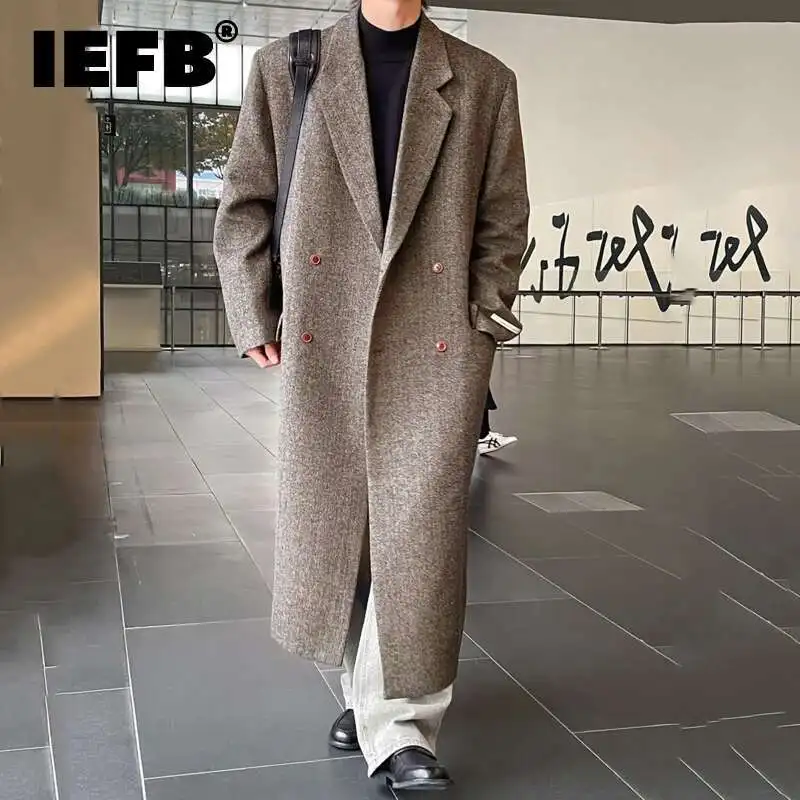
Seasonal Storage
- Clean thoroughly before storing for off-season
- Ensure coat is completely dry before storage
- Use cedar blocks or lavender sachets as natural moth deterrents
- Store in breathable cotton garment bags
- Keep in cool, dry space away from direct sunlight
Proper maintenance not only extends the life of your coat but preserves its appearance. When you understand how to maintain the look of your long overcoat, you protect both the garment’s functionality and its visual appeal, ensuring it remains an asset to your wardrobe for many years.
Is a Custom-Made Long Coat Worth Considering?
For those seeking the ultimate fit and personalization, custom-made long coats represent the pinnacle of outerwear. These made-to-measure or bespoke options offer advantages that ready-to-wear garments simply cannot match, though they come with higher price tags and longer wait times.
What are the advantages of custom coats?
The primary benefit is an absolutely perfect fit that accommodates all body proportions and posture nuances. Unlike ready-to-wear options which are designed for an “average” body type, custom coats are built specifically for your measurements. This results in superior comfort, better drape, and more flattering proportions.
Material selection represents another significant advantage. While retail options limit you to what’s available, custom orders allow you to choose from hundreds of fabric options, weights, and textures. You can select the exact shade, pattern, and quality that meets your preferences.
Beyond fit and fabric, customization extends to all design elements: lapel style and width, button configuration, pocket placement and style, lining materials, and special details like ticket pockets or functional buttonholes. This creates a truly one-of-a-kind garment that reflects your personal style.
How does pricing compare to retail options?
Custom coats typically start where high-end retail options leave off, with entry-level made-to-measure beginning around $800-1,000 and true bespoke starting at $2,000-3,000. While this represents a premium over most ready-to-wear options, the comparison isn’t entirely straightforward. The custom coat perfectly fits your body and preferences, potentially offering better value despite the higher initial investment.
What’s involved in ordering a custom coat?
The process typically involves:
- Initial consultation and style selection
- Measurement session (10-30 measurements depending on maker)
- Fabric and customization choices
- First fitting with partially constructed garment (for true bespoke)
- Adjustments and final construction
- Final fitting and any last refinements
Timeframes range from 3-8 weeks for made-to-measure to 2-3 months for full bespoke services. The investment in time and patience is substantial but results in a truly exceptional garment.
Custom coats represent the ultimate expression of personal style and appreciation for craftsmanship. While not necessary for everyone, those who value perfect fit, unique details, and exceptional quality may find the investment worthwhile for a garment they’ll treasure for decades.

